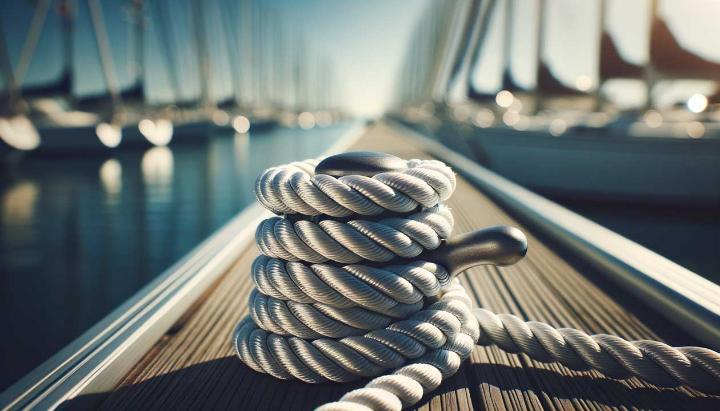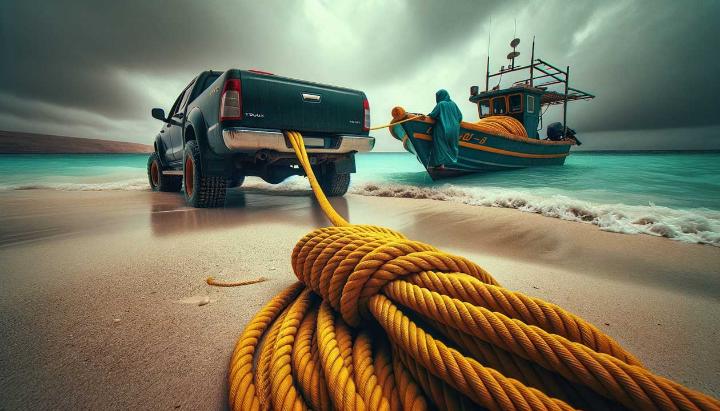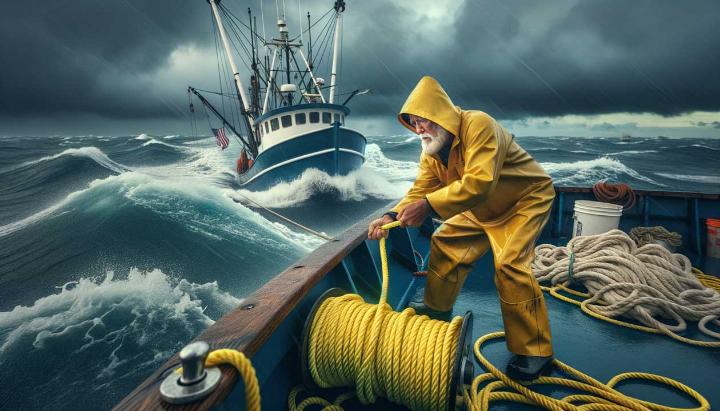Have you ever found yourself in a tight spot, desperately needing a reliable rope for towing or marine applications? The choice you make can mean the difference between smooth sailing and a nautical nightmare. Enter the unsung hero of the rope world: twisted polypropylene rope. This versatile workhorse has been quietly revolutionising both land and sea operations, offering a unique blend of strength, buoyancy, and durability that's hard to match.
In this deep dive, we'll explore why twisted polypropylene rope has become the go-to choice for savvy mariners and towing professionals alike. From its impressive strength-to-weight ratio to its remarkable resistance to the elements, we'll uncover the secrets that make this rope a game-changer in challenging environments. Whether you're a seasoned sailor or a weekend warrior, understanding the capabilities of twisted polypropylene rope could be the key to safer, more efficient operations on your next adventure.
So, grab a cuppa and settle in as we unravel the mysteries of twisted polypropylene rope strength for towing and marine use. You might just discover that the perfect rope for your needs has been hiding in plain sight all along.
Understanding Twisted Polypropylene Rope
When it comes to versatile and cost-effective rope solutions, twisted polypropylene rope stands out as a popular choice for both towing and marine applications. As someone who's spent years working with various rope types, I can tell you that this three-strand wonder has a lot to offer.
Characteristics and Uses of Twisted Polypropylene Rope
Twisted polypropylene rope is a synthetic rope made from polypropylene fibres, twisted together in a three-strand construction. This unique design gives it a distinctive appearance and feel that's instantly recognisable to those in the know. Let me break down some key characteristics for you:
- Lightweight yet strong: It's surprisingly light in your hands, but don't let that fool you – it can handle substantial loads when properly used.
- Floats on water: This property makes it a favourite for marine applications, from mooring to water sports.
- Resistant to elements: It stands up well to mildew, chemicals, and UV radiation, though prolonged sun exposure can affect its strength over time.
- Versatile sizing: Available in various diameters and lengths to suit different needs, from small craft uses to heavy-duty industrial applications.
I remember the first time I used twisted polypropylene rope on a sailing trip. The ease of handling and its buoyancy were game-changers, especially when we needed to quickly adjust our mooring in choppy waters.
Advantages and Disadvantages of Twisted Polypropylene Rope
Like any material, twisted polypropylene rope has its strengths and limitations. Let's weigh them up:
Advantages
Cost-effective, buoyant, and versatile for many applications
The economical nature of twisted polypropylene rope makes it an attractive option for both personal and commercial use. Its ability to float is a significant advantage in marine environments, and its versatility means you can use it for everything from bundling to temporary barriers.
However, it's important to be aware of its limitations:
- UV sensitivity: While resistant to many elements, prolonged sun exposure can degrade the rope over time.
- Lower strength compared to some materials: For heavy-duty applications, you might need to consider other options like nylon or polyester ropes.
- Stretch under load: It has more stretch than some other synthetic ropes, which can be an advantage or disadvantage depending on your needs.
To get the most out of your twisted polypropylene rope, store it properly when not in use and inspect it regularly for signs of wear. And here's a pro tip: if you're using it for a critical application, consider replacing it more frequently than you might with other rope types.
Have you ever used twisted polypropylene rope for a project? What was your experience like? Understanding its characteristics and proper use can make all the difference in its performance and longevity.
Twisted Polypropylene Rope Strength: Understanding the Basics
As we delve deeper into the world of twisted polypropylene rope, it's crucial to understand its strength characteristics. Having worked with various rope types for years, I can tell you that knowing the ins and outs of rope strength is essential for ensuring safety and efficiency in both towing and marine applications.
Tensile Strength and Breaking Load of Polypropylene Ropes
When we talk about rope strength, two key terms come into play: tensile strength and breaking load. Tensile strength refers to the maximum stress a rope can withstand while being stretched before breaking, while breaking load is the point at which the rope fails under tension.

For twisted polypropylene rope, these values vary depending on the diameter. Here's a quick reference table to give you an idea:
- 8mm (5/16") rope: Breaking strength of approximately 1,040 kg (2,290 lbs)
- 12mm (1/2") rope: Tensile strength of about 3,780 lbs
- 16mm (5/8") rope: Breaking load around 2,400 kg (5,290 lbs)
Remember, these are approximate values and can vary based on manufacturing quality and environmental conditions.
Factors Affecting Rope Strength and Durability
Several factors influence the strength and durability of twisted polypropylene rope:
- Rope diameter: Generally, the thicker the rope, the stronger it is. However, this also means increased weight and reduced flexibility.
- Three-strand construction: This classic design provides a good balance of strength and handling characteristics.
- Environmental factors: UV exposure, moisture, and temperature can all affect rope strength over time.
Compared to other materials, twisted polypropylene sits in the middle range for strength. It's stronger than natural fibre ropes like manila but not as strong as nylon or polyester. However, its lightweight nature and ability to float make it a popular choice for many applications.
Pro tip: When selecting a twisted polypropylene rope, always choose one with a breaking strength at least 5 times greater than the maximum load you expect it to bear. This safety factor ensures you're working within safe limits.
To determine the appropriate twisted polypropylene rope strength for your application, consider the maximum load, environmental conditions, and any safety regulations specific to your industry. It's always better to err on the side of caution and choose a stronger rope if you're unsure.
Have you ever had to choose between different rope strengths for a project? What factors did you consider in your decision-making process? Understanding these nuances can make all the difference in selecting the right rope for your specific needs.
Applications of Twisted Polypropylene Rope in Towing
As we dive into the world of towing applications, it's crucial to understand why twisted polypropylene rope has become a go-to choice for many professionals and enthusiasts alike. Having spent years working with various ropes in both marine and land-based environments, I can attest to the versatility and reliability of this material.
Advantages of Twisted Polypropylene for Towing
Twisted polypropylene rope offers a unique set of benefits that make it particularly well-suited for towing applications:
- Impressive strength-to-weight ratio: This rope provides substantial pulling power without adding unnecessary weight to your towing setup.
- Buoyancy: Its ability to float on water is a game-changer for marine towing scenarios, making retrieval and handling much easier.
- Chemical resistance: Unlike some other materials, twisted polypropylene stands up well to exposure to various chemicals, oils, and fuels.
- UV resistance: While prolonged sun exposure can affect any rope, twisted polypropylene holds up better than many alternatives.
I remember a particularly challenging vehicle recovery operation where the lightweight nature of the twisted polypropylene rope made all the difference. We were able to manoeuvre it easily through difficult terrain, something that would have been much harder with a heavier steel cable.
Towing Applications in Marine and Land Environments
The versatility of twisted polypropylene rope shines through in its wide range of towing applications:

Marine Towing:
- Boat towing: Its buoyancy makes it ideal for towing smaller vessels behind larger ones.
- Dock lines: The rope's durability and resistance to water absorption make it perfect for securing boats to docks.
- Emergency towing: In situations where quick action is needed, the lightweight nature of the rope allows for fast deployment.
Land-Based Towing:
- Vehicle recovery: Its strength and flexibility make it suitable for pulling vehicles out of ditches or mud.
- Industrial towing: In factories and warehouses, twisted polypropylene rope can be used to move heavy equipment safely.
- Agricultural applications: Farmers often use this rope for towing trailers or pulling stuck machinery.
When using twisted polypropylene rope for towing, always prioritise safety. Here are some best practices to keep in mind:
Always inspect your rope before each use, never exceed the recommended load capacity, and keep bystanders at a safe distance during towing operations.
Have you ever used twisted polypropylene rope for a towing application? What was your experience like? Understanding the proper techniques and safety considerations can make all the difference in successful and safe towing operations.
Marine Applications of Twisted Polypropylene Rope
As a seasoned sailor and marine enthusiast, I've had my fair share of experiences with various types of ropes. But when it comes to versatility and reliability in marine environments, twisted polypropylene rope stands out from the crowd. Let's dive into why this remarkable rope has become a staple in the maritime world.
Advantages of Polypropylene Rope in Marine Environments
Twisted polypropylene rope boasts a unique set of characteristics that make it ideal for marine applications:
- Buoyancy: Unlike many other rope materials, polypropylene floats on water, making it easy to spot and retrieve in marine settings.
- Water resistance: This rope doesn't absorb water, maintaining its strength and lightweight properties even when wet.
- Chemical resistance: It holds up well against saltwater, marine organisms, and various chemicals commonly found in marine environments.
- UV resistance: While prolonged exposure can affect its strength, polypropylene rope generally withstands sunlight better than some natural fibre ropes.
- Cost-effectiveness: Compared to other synthetic ropes, twisted polypropylene offers excellent value for money, making it a popular choice for both recreational boaters and commercial marine operations.
I remember a particularly windy day out on the water when our mooring line snapped. Thanks to the bright yellow polypropylene rope we had as a backup, we quickly spotted it floating on the surface and were able to secure the boat safely. That experience really drove home the importance of having the right rope for marine use.

Common Uses for Twisted Polypropylene Rope in Marine Settings
The versatility of twisted polypropylene rope makes it suitable for a wide range of marine applications:
- Dock lines: Its floating properties and resistance to mildew make it perfect for securing boats to docks.
- Anchor lines: The rope's strength and buoyancy are ideal for anchoring systems, especially in shallow waters.
- Mooring lines: Its durability and resistance to abrasion make it suitable for long-term mooring applications.
- Water sport tow ropes: The lightweight nature and floating ability of polypropylene rope make it excellent for water skiing and wakeboarding.
- Safety lines: Its high visibility (often available in bright colours) and floating properties make it useful for marine safety equipment.
When using twisted polypropylene rope in marine settings, proper maintenance is key to ensuring its longevity and performance. Here are some tips I've learned over the years:
Rinse the rope with fresh water after use in saltwater, store it away from direct sunlight when not in use, and inspect it regularly for signs of wear or damage. Replace the rope if you notice significant fraying or weakening.
Have you ever used twisted polypropylene rope for your marine adventures? What was your experience like? Understanding the strengths and limitations of this versatile marine rope can help you make the most of it in your nautical endeavours.
Remember, while twisted polypropylene rope is excellent for many marine applications, it's always important to choose the right rope for your specific needs. Consider factors such as load requirements, environmental conditions, and intended use when selecting your marine rope. With proper care and use, twisted polypropylene rope can be a reliable companion on your marine journeys for years to come.
If you're interested in exploring more about the strengths and applications of different rope types, check out our detailed guide on the variants of hollow braided polypropylene rope or learn about the advantages of braided nylon rope. These articles provide in-depth insights that can help you make informed decisions for your specific needs.
Understanding the nuances of twisted polypropylene rope reveals why it's a preferred choice for both towing and marine applications. This lightweight, buoyant, and cost-effective rope offers substantial strength while resisting environmental elements like mildew, chemicals, and UV radiation. In towing, its impressive strength-to-weight ratio and chemical resistance prove invaluable, whether on land or marine settings. Its buoyancy and water resistance make it ideal for various marine uses, from mooring and dock lines to emergency towing and water sports. Addressing safety considerations and proper maintenance ensures that twisted polypropylene ropes deliver optimal performance across diverse scenarios.
Explore Custom Rope Solutions Today
If you're looking for high-quality, customised rope solutions for towing or marine use, fill in the form above to connect with our experts. Let's find the best twisted polypropylene rope strength tailored to your specific needs.